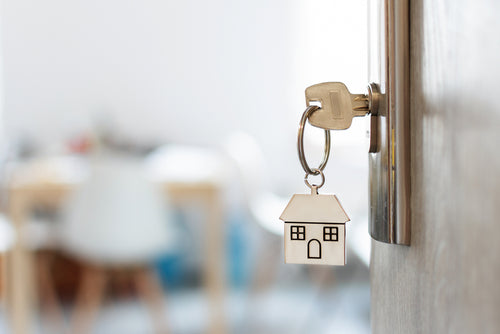
Moving in and moving out
When you are in the middle of a move, there are many things to keep track of. It can be difficult to keep track of all the rules, pitfalls and the many moving boxes at the same time.
Therefore, we have compiled this overview of the most important rules, as well as what you need to be aware of when moving in and out.
Moving in
When moving in, there are several conditions you need to take into account. We recommend that you let us review your lease so that we can guide you based on your specific case.
Lejernes Retshjælp mentions below the three most important rules that you need to be aware of when moving in. However, the following rules only apply if your lease was concluded after 1 July 2015. This is because before 1 July 2015, there was no requirement for the landlord to do move-in inspections.
When moving in, you should pay attention to:
- If the landlord rents out more than one tenancy, according to the rules of the Rent Act, a move-in inspection must always be held, §90, stk.2 of the Rent Act.
- The landlord is obliged to summon the tenant to a move-in inspection with appropriate notice, § 90 stk. 1, 2nd sentence of the Danish Rent Act.
- As a tenant, you are entitled to a copy of the move-in report. Either you must have it at the end of the inspection or no later than 2 weeks after the move-in inspection has been held
You must, no later than 2 weeks after you have moved into the lease, have sent a list of errors and defects to your landlord. This is an insurance in relation to your move-out, so you will not be liable for the errors and deficiencies you have already pointed out.
Lejernes Retshjælp recommends that you take pictures when moving in so that you can prove the condition of the lease.
Reviewing the condition of the lease when moving in and the documentation is crucial for how you stand when moving out, and thus how much of your deposit you are entitled to get back.
Vacation
Lejernes Retshjælp often receives inquiries from tenants who have questions or need legal guidance in connection with moving out of a lease. We would like to help with advice and guidance in connection with your move-out, and possibly clarify whether the landlord's renovation requirements are reasonable or not.
Below you will find some of the formal requirements set out in the Rent Act, which the landlord must comply with in connection with vacation:
- If the landlord rents out more than one tenancy, a vacancy inspection must be held, §187 stk. 3, 1 pkt. of the Danish Rent Act.
- You must be summoned to the inspection with 1 week's notice, §187 stk 3, 2nd sentence of the Rent Act.
- The landlord must prepare a vacancy report in connection with the inspection, and this must be handed over to the tenant at the inspection or no later than 14 days after the vacancy inspection has been held, § 187 stk. 4 of the Rent Act.
Below are some precautions that you as a tenant should be aware of before the vacancy process has started. If this is not done, it can be difficult to help.
- Get the landlord to acknowledge receipt of keys
- Be sure to hand over the lease according to the agreement in the lease
- Clean the lease, including filter in extractor hood, extraction in bathroom, descaling of various tiles, appliances, wash windows, etc. Make sure to take good pictures after you have cleaned and emptied the apartment of all your own contents. You may also want to take pictures for the move-out view
- If you disagree with the vacancy report, do not sign. If necessary, write clearly that you only acknowledge receipt
- Within 14 days of the move-out inspection, you must have received a move-out report
- Within a reasonable time, you must receive a moving statement in which all the claims made by the landlord in the vacancy report are listed with price. Here you can see how much you may need to get back of your deposit
If you are in doubt about the above points, or want help when moving in or out, you are welcome to contact us.
Among other things, we can help you see whether the formal requirements are met, as well as make a legal assessment of whether there are claims that are unreasonable or invalid under the Rent Act.






